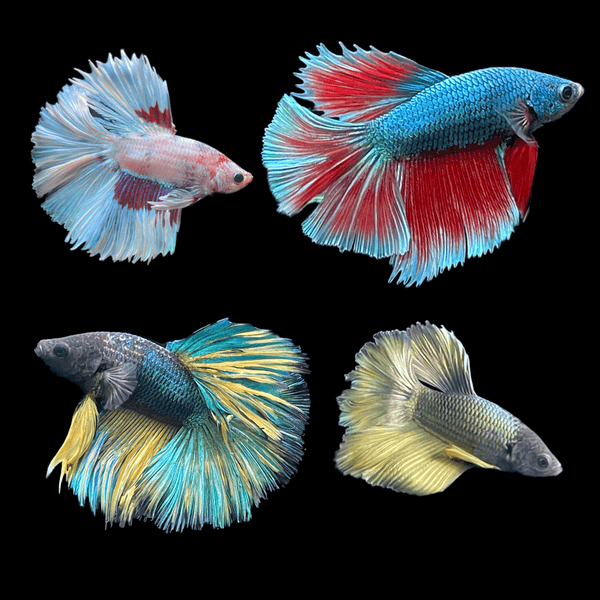The Ultimate Betta Fish Treatment Guide for New Family Pet Owners
The Ultimate Betta Fish Treatment Guide for New Family Pet Owners
Blog Article
How to Reproduce Betta Fish Successfully: Expert Techniques and Insights for Hobbyists Looking to Increase Their Betta Collection
Breeding Betta fish calls for a nuanced understanding of genetics and environmental problems, making it essential for enthusiasts to approach the procedure with both diligence and treatment. Developing an optimal breeding environment, selecting the appropriate pairs, and observing the ins and outs of their courtship actions are foundational actions that can significantly affect the end result. The succeeding treatment of the fry is crucial for ensuring their healthy and balanced advancement. As we check out these vital elements, it becomes clear that effective reproduction is not just concerning the first pairing however incorporates a wider technique that merits mindful consideration.
Understanding Betta Fish Genetics
Comprehending the genetics of Betta fish is essential for effective reproduction, as it affects traits such as shade, fin form, and behavior. Betta fish display a varied range of colors and patterns, mostly figured out by their genetic makeup.
Along with coloration, fin morphology is one more considerable element of Betta genetics (betta fish). The sizes and shape of fins are affected by various genetics, including those that determine whether the fins are short, long, or veil-shaped. Understanding these hereditary variations helps breeders forecast the phenotypic outcomes of their children
In addition, behavior attributes such as aggression and territoriality can also be affected by genetics. These habits play an important function in the breeding procedure, as they can impact spawning success and the overall temperament of the resulting fry. By adequately recognizing these hereditary principles, dog breeders can make enlightened decisions, eventually boosting their breeding programs and achieving preferable outcomes.
Preparing the Reproduction Atmosphere
Creating an ideal reproduction setting is crucial for the effective recreation of Betta fish. The initial step in preparing this setting is to pick an appropriate breeding storage tank, ideally varying from 5 to 10 gallons.
Following, take into consideration the usage of a sponge filter or an air stone to supply mild water blood circulation without developing strong currents that can emphasize the fish. It is necessary to install plants or reproducing cones to supply concealing places and promote comfort for the female throughout the spawning process. Floating plants, such as Java moss or water sprite, can also produce a more natural environment while promoting bubble nest building by the man.
Before introducing the reproducing sets, ensure the water is conditioned and free from damaging chemicals, such as chlorine or heavy steels. betta fish. Normal water changes should be conducted to preserve ideal water high quality, enhancing the opportunities of effective breeding. With these prep work in place, the breeding environment will support the health and wellness of both Betta fish
Choosing Reproduction Pairs
Picking the ideal reproduction pairs is vital for attaining effective Betta fish reproduction. When picking your reproduction sets, take into consideration a number of vital elements consisting of health and wellness, temperament, and genetics. Healthy Betta fish exhibit lively colors, clear eyes, and active actions. Choosing fish that are devoid of condition ensures a better chance of producing practical spawn.
Character is one more crucial factor to consider, as Betta fish additional hints are understood for their hostile nature. It is advisable to choose a male and lady that display suitable temperaments to minimize tension during the reproducing procedure. A calm man can motivate a smoother courtship, while a woman that is also hostile may disrupt the process.
Hereditary history also plays a substantial role in the top quality of the spawn. Reproducing fish that are genetically varied can minimize the threat of genetic health concerns and boost the total vigor of the fry. go right here It is helpful to investigate the lineage of both the male and woman, concentrating on desirable characteristics such as fin type, color patterns, and dimension.
The Reproduction Refine
The reproduction process of Betta fish calls for careful planning and interest to information to ensure an effective end result. At first, it is important to prepare an appropriate breeding container, preferably a 5-10 gallon aquarium with a temperature level maintained at 78-80 ° F. The container must be geared up with a heater, filter (preferably sponge kind to stay clear of strong currents), and a lot of aquatic plants for the lady to conceal.
When the setting is established, introduce the selected breeding set to the tank, allowing them to accommodate. Observe their habits; the man will certainly display intricate courtship routines, including flaring his fins and developing a bubble nest. If the woman shows rate of interest, she will display vertical red stripes indicating readiness for spawning.
When the woman is receptive, the pair will involve in a breeding accept, during which the male fertilizes the eggs. Maintaining optimum water conditions throughout this duration is crucial for the growth of healthy and balanced Betta fry.
Taking Care Of Betta Fry

Feeding Betta fry is critical, as they require a diet plan site link high in healthy protein. They can be fed infusoria or liquid fry food, transitioning to finely crushed top notch pellets as they expand. Feed little portions numerous times a day to encourage healthy and balanced development without overwhelming the container with uneaten food.
:strip_icc()/siamese-fighting-fish-bettas-1378308-hero-f459084da1414308accde7e21001906c.jpg)
As they develop, monitor their development closely and separate any kind of hostile people to stop injury. By giving a nurturing environment and proper nutrition, enthusiasts can effectively raise Betta fry into vivid, healthy and balanced fish, eventually boosting their breeding ventures.
Verdict
Successful Betta fish breeding calls for careful attention to genetic selection, ecological conditions, and care for the fry. By comprehending the genes of Betta fish and preparing an appropriate breeding atmosphere, enthusiasts can enhance the chances of creating vibrant, healthy and balanced spawn.
Report this page